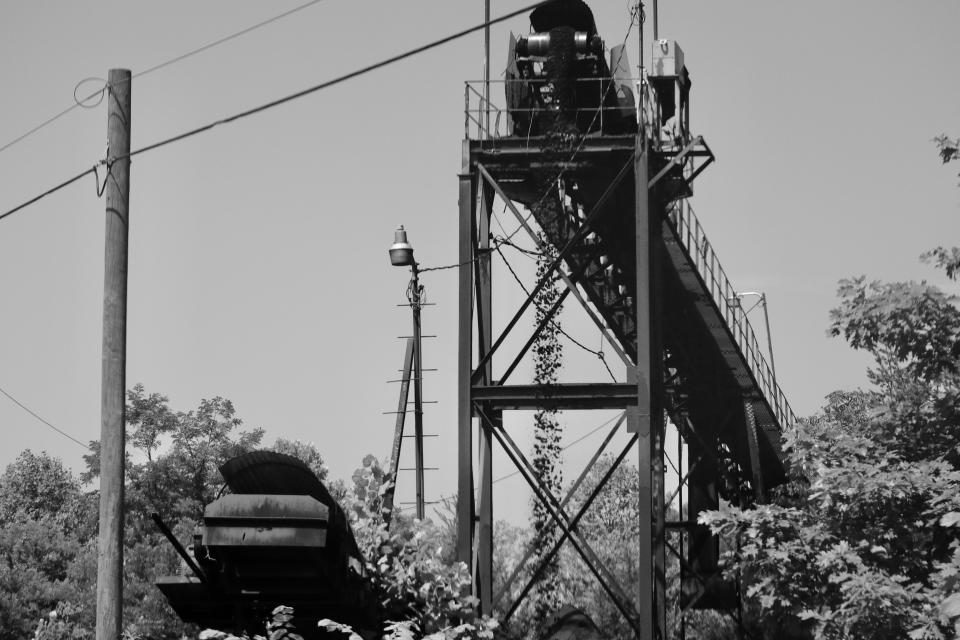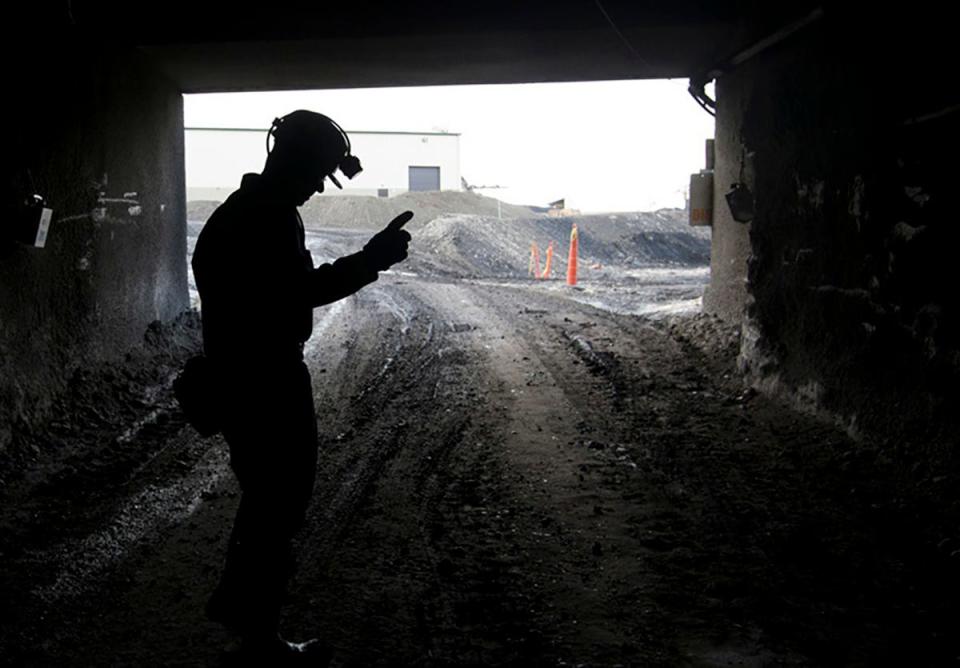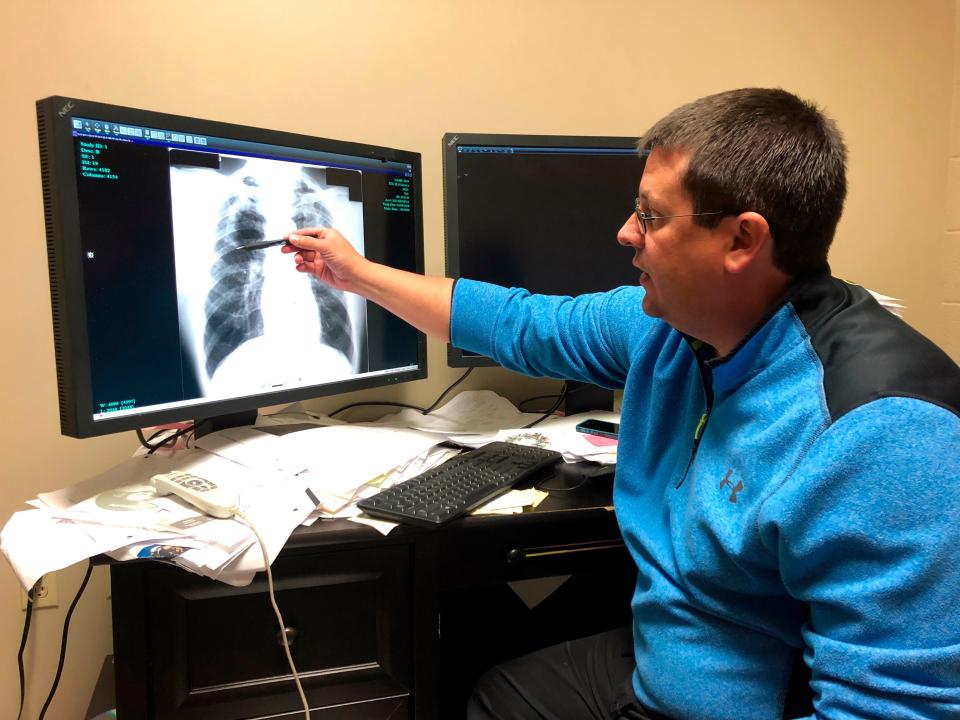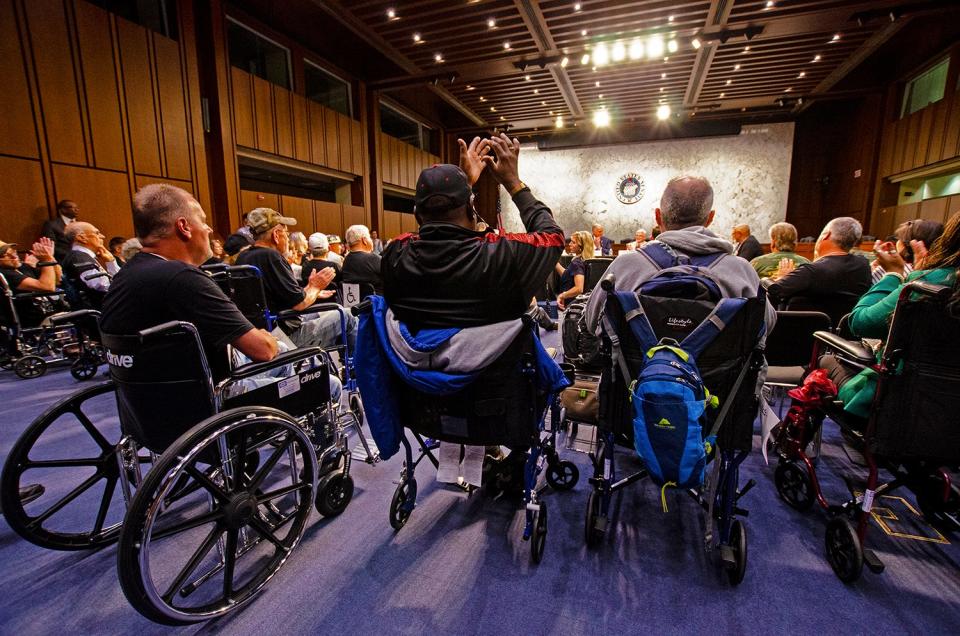Not your grandfather's black lung: Federal rule seeks to save coal miners from silica dust
Workers may get respite from breathing the toxic dust that remains omnipresent in U.S. mining operations, despite decades of evidence of its deadly consequences.
The federal Mine Safety and Health Administration has proposed cutting by half the level at which miners may be exposed to silica dust stirred up during drilling for coal and other ores. The new regulations align with exposure limits already in place in other job sectors. The fine dust, crystalline silica, is a primary driver for harmful respiratory illnesses known as pneumoconioses, with symptoms that include scarring in the lungs and restricted lung capacity. There is no cure for these diseases.
Growing evidence indicates that silica dust contributes to black lung disease, or coal workers' pneumoconiosis, as well as its more deadly form, progressive massive fibrosis.
New vaccines Are COVID vaccine concerns impacting flu-shot rates? Here's what the data says.
“Silica is actually quite toxic dust,” said Dr. Leonard Go, an assistant professor at the University of Illinois Chicago’s School of Public Health, who has studied silica’s effects on miners. Despite silica being common in the earth’s crust, he said, “This is bad stuff, and it can cause quite severe disease. It’s clear that, in the case of coal mining, the current regulation is not effective in preventing disease.”
What the rule does
The federal rule would drastically limit silica dust permissible in mining to just 50 micrograms per cubic meter, with an action level at 25 micrograms, for an eight-hour workday. That's the equivalent of a tiny, short strand of hair appearing once a day, in fine dust form, within the space of a cardboard box, Go estimated.

Notably, the rule would also require, for the first time, that workers mining metal, nonmetal, stone, sand and gravel receive early and ongoing health screenings at no cost. Coal miners have had mandatory on-site screenings, check ups and X-rays since Congress passed the Federal Coal Mine Health and Safety Act of 1969, which established the Coal Workers’ Health Surveillance Program. The public comment period for the new rule ended in mid-September, and a final rule is expected to be issued later this fall.
For years, regulators and labor groups have kept an eye on breathing hazards for coal miners. The new rule will likely benefit coal miners in Central Appalachia, where more than a fifth of long-tenured workers are estimated to have pneumoconiosis. But coal workers now make up a declining share of the workforce, about 55,000 people nationwide, compared with nearly 200,0000 metal, nonmetal, stone, sand and gravel workers, who operate in what has been until now a far less regulated sector.
The harms of silica have been known since at least the 1930s, when the Department of Labor led a campaign to “Stop Silicosis,” a pneumoconiosis associated with inhaling silica dust.
Decades later, in the late '60s, the federal government began regulating coal dust, prompted by concerns about the prevalence of black lung disease among coal miners. From that period through the 1990s, doctors saw a steep decline in the disease. Now a growing body of evidence shows an increase in silica dust across U.S. mining operations, which has contributed to miners becoming more ill and even exacerbating cases of black lung in recent decades.

Academic experts and regulators attribute the increase in severe black lung in younger workers to thinner coal seams as workers drill through more layers of rock containing silica. At the same time, advances in technology mean workers handle heavier machinery that kicks up more dust than older miners, who often relied on hand tools.
'Just about all of them did' get black lung
Former coal miner Leonard Fleming, 81, of Whitesburg, Kentucky, has a severe form of black lung disease. He relies on a myriad of medical devices to help his breathing, including various portable oxygen tanks, a nebulizer that mists liquid and a vest to dislodge mucus. He no longer takes warm showers. He estimates he can take about 20 steps before he has to stop to huff for air.
Environmental justice Residents of Cancer Alley sue Louisiana parish officials over civil rights, religious liberty violations
Fleming’s grandfather and father had black lung. After serving in the Army, Fleming saw its effects as a 24-year-old lab assistant in a coal miners’ hospital, wearing a white lab coat and dress pants, conducting pulmonary function tests. Eventually, he turned to the mines like his family members had before him, for the wages, which supported his late wife, Norma, and their two children, who never worked in the mines.
“Anybody that goes in the mines just assumes they’re not going to get it,” Fleming said, wheezing as he talked. “Just about all of them did.”
Now that he's retired, Fleming said, he longs to watch the dirt track car racing or baseball games, but his body can't handle the exertion.
What he's lived through is now better understood.
Silica's effects on the body
In a 2022 study in Annals of the American Thoracic, Go and other researchers viewed tissue samples from 85 deceased coal miners born before and after 1930, in many cases from people who lived through the implementation of federal regulations on coal dust levels. The samples indicated that people who'd mined in recent years had higher concentrations of silica in their lungs and endured severe lung disease, often at earlier ages than the previous generations of miners who showed severe disease that tended to be derived from coal dust.
These findings square with the 2020 review of the Coal Workers Health Surveillance Program by the National Institute for Occupational Safety and Health, which showed a resurgence in pneumoconiosis and progressive massive fibrosis, especially in Appalachia.
Dr. Noemi Hall, a research epidemiologist at NIOSH’s Respiratory Health Division in Morgantown, West Virginia, said miners are contracting more severe forms of disease in their 30s and 40s.

Silica dust, she explained, can break down into even smaller pieces and lodge itself permanently in the lungs.
“These miners can’t get rid of it,” she said. “Once it goes in there, it stays in there.”
Inside the lungs, it causes inflammation and scarring that results in a limited capacity to take in oxygen. Symptoms include coughing, fatigue, shortness of breath and chest pain. Workers who develop pneumoconiosis are also at greater risk of issues such as tuberculosis, lung cancer and chronic obstructive pulmonary disease, or COPD.
Decades of inaction

Concerns about silica dust arose long before the 21st century. In fact, in 1974, NIOSH recommended cutting silica dust levels, just five years after the federal law regulating coal and its effects on miners. Labor advocates attribute the delay in addressing the danger to the aggressive lobbying by coal companies and other industries, which centered on denying silica’s harm on the body.
The official consensus seems to have shifted across the industry. Christopher Williamson, assistant secretary for the Mine Safety and Health Administration, said the consensus is that miners should have the same protection as other workers with silica dust. Other occupations, such as construction, where workers are exposed to greater quantities of silica, are already covered under Occupational Safety and Health Administration standards implemented in 2016.
“The timing is right to move forward on it,” Williamson, whose West Virginia family members worked in coal mines and developed black lung, told USA TODAY. “We know that miners need greater levels of protection from exposure to this toxic dust, and that’s why we’ve proposed it.”
What does industry, labor say?
The National Mining Association, which represents mining companies, supports lower silica exposure levels, but it took issue with proposals that called for respirators, or personal protective equipment. The rule under consideration uses respirators as a temporary supplemental measure when silica levels are high.
Paul Krivokuca, vice president for health and safety at the National Mining Association, wrote in final comments there were some "times and places where use of PPE is the best way to protect miners when other measures have proven unable to reduce personal exposure."
Go, of the University of Illinois Chicago, said he thinks masking against dust is the least effective means of protection, and it can cause communication problems in the workplace. Preventing dust from being in the atmosphere, whether by watering it down or through better ventilation, is safer, he said.
Officials from the United Mine Workers of America told federal regulators they were concerned about enforcement of the rule by mine operators, who are currently expected to conduct sampling of exposure levels but don't always do so. The union told federal officials in final comment the rule is “vulnerable to being gamed.”
“This would be like each driver on a highway being responsible for reporting their own violations of law,” union President Cecil Roberts said.
“We know that would never work,” he said. “You need a number of things in order to protect miners. You need good laws. You need those laws to be obeyed and, if they're not obeyed, you need good enforcement.”
At Temple University Medical Center, in Philadelphia, Dr. Jamie Garfield, a professor of thoracic medicine and surgery, sees miners who travel into the city for lung transplant evaluations, at late stages in the disease.
The new rule could reduce that risk, she said.
“Anytime that we can identify a condition that is completely avoidable with better surveillance, oversight and protection,” she said, “that is an opportunity for a major public health triumph.”
Eduardo Cuevas covers health and breaking news for USA TODAY. He can be reached at EMCuevas1@usatoday.com.
This article originally appeared on USA TODAY: Silica dust can be deadly for coal miners. This new rule hopes to help

